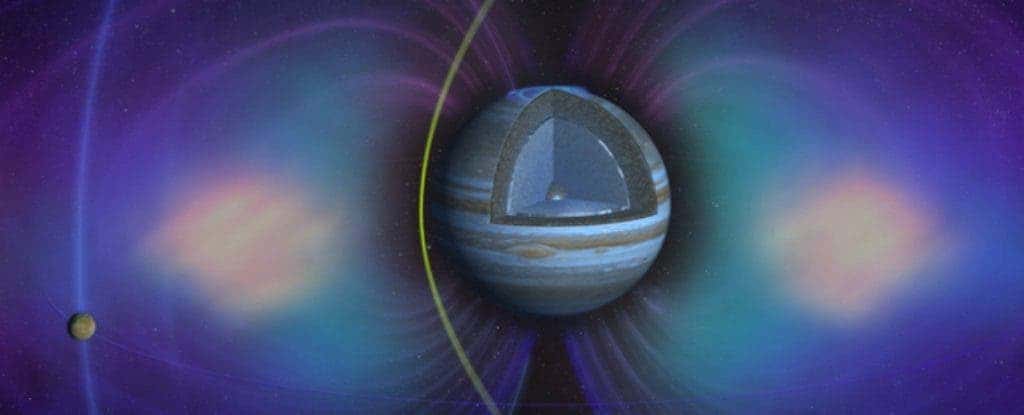Juno was launched from Cape Canaveral Air Force Station on August 5, 2011 and was projected to enter Jupiter’s atmosphere on the 4th of July, 2016. The plan was flawlessly carried out, as Juno is, as I’m writing these very lines, zooming in on Jupiter’s atmosphere.

What’s happening
Juno will become one of the fastest objects ever built by humans, accelerated by Jupiter’s huge gravitational pull to speeds up to 150,000 mph (241,000 km/h). After it reaches a maximum speed of 165,000 mph (266,000 km/h) – fast enough to fly around Earth in 9 minutes – Juno will slam its brakes to enter the orbit trajectory.
Maneuvering the orbit into the planet’s atmosphere is no easy feat. Juno must lock into a so-called polar orbit – in other words, it will rotate around Jupiter in a way that it will pass above its poles. It’s the most dangerous part of the mission, and one which NASA engineers will be anxiously watching.
If everything goes according to plan, then Juno will orbit the biggest planet in our solar system for 18 months, during which it will provide an unprecedented view of Jupiter, offering not only high-resolution images of the planet, but also information about its physical parameters. If something goes wrong, then Juno’s likely to miss Jupiter and go straight into outer space, with little chance to return.
How you can see it
You can watch the action at NASA unfold beginning at 10:30pm ET. That’s right, you can watch a shuttle enter Jupiter’s atmosphere live on the internet – what a time to be alive, eh?
You can witness it on NASA TV or below:
Rick Nybakken, Juno’s project manager, said the probe had to thread itself on to a very accurate trajectory to achieve its goal. He is one of the people you can expect to see on this broadcast.
“What we’re targeting is a space that’s tens of km wide. We’re going to hit that within 1.2 seconds after a journey of [2.8 billion km]. That tells you just how good our navigation team is,” he told reporters. “We need to get into orbit tonight and I’m very confident we will.”
The principal investigator, Scott Bolton from the Southwest Research Institute in Texas, is also anxious to see it happening.
“It is the king of our Solar System. This is it; more massive than all the other planets and everything else in our Solar System combined (other than the Sun),” he said. “Its zones and belts, its Great Red Spot, its incredible turbulent atmosphere – we’ve known it for many, many years. It’s a gorgeous planet but what Juno is about is looking beneath that surface. We’ve got to go down and look at what’s inside.”
Researchers are also prepared to make the most of this mission as fast as possible, because despite setting up several safety measures, there is still a chance that Jupiter’s enormous magnetic field will damage the electronics on Juno and will render some of its capabilities useless. The visual camera in particular is expected to fail before the mission ends in early 2018.


